How to Plant a Succulent Bowl
Would you like to add a touch of greenery to your home or office space? Succulent bowls are a great way to bring nature indoors and spruce up a flat environment.
I write a lot about succulent care but planting succulent arrangements is my favorite thing about these unique plants because it allows me to feel creative as I sit and pair different varieties together based on color, size, and texture.
It’s a creative and calming process for me, too. I love it, and I’m always thrilled when someone wants to give it a try.
This process isn’t complicated by any means, but there are a few things that can help you feel more confident about it. I’ll give you some pointers, like how to choose succulent varieties, prepare your planter, and care for your new arrangement.
Choosing Your Succulent Bowl or Planter
The first step in creating a succulent bowl is selecting the container.
You can use anything from a traditional terra cotta pot to a vintage teacup or a repurposed wooden box.
I like round, wide planters because they allow me to plant several succulents together rather than just a few. I also like choosing white or off-white planters because they let the colorful succulents shine through.
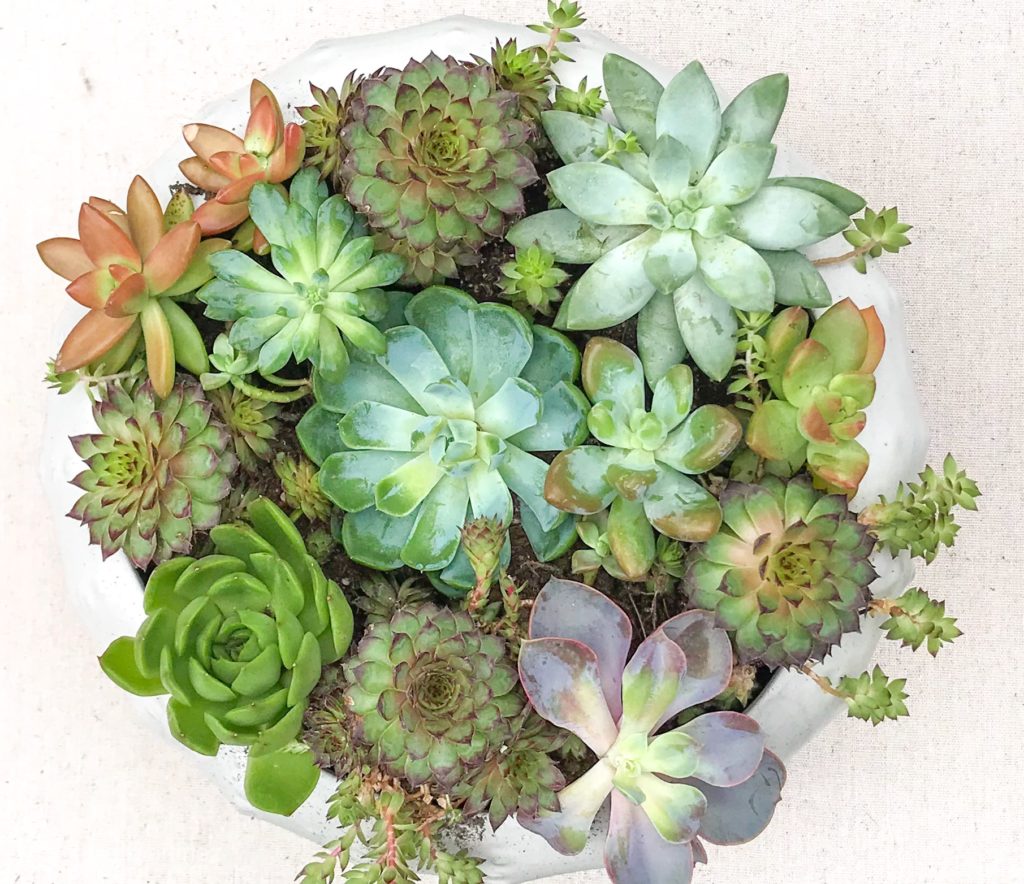
The key is to ensure that your container has proper drainage. This will prevent root rot caused by waterlogged soil.
However, if you’d like to plant in a container that has no drainage holes, that’s fine too; just make sure to water sparingly. If you need more tips on how to do this, this post on How to Water Succulents in Pots Without Drainage can help.
Next, it’s time to choose your succulents!
Choose plants you love or that visually complement each other; this is entirely subjective! Choose the succulent types that call your attention – I always gravitate to certain varieties and you probably do, too.
In the next section, I’ll go over some popular succulent varieties and how to care for them.
Choosing the Right Succulents
Choosing the right succulents is a big step in creating succulent bowls, BUT there’s also a lot of leeway here.
Not all succulents are going to look fabulous in small succulent bowls, and some may not thrive in certain climates or growing conditions.
Here are a few things to consider when selecting your succulents.
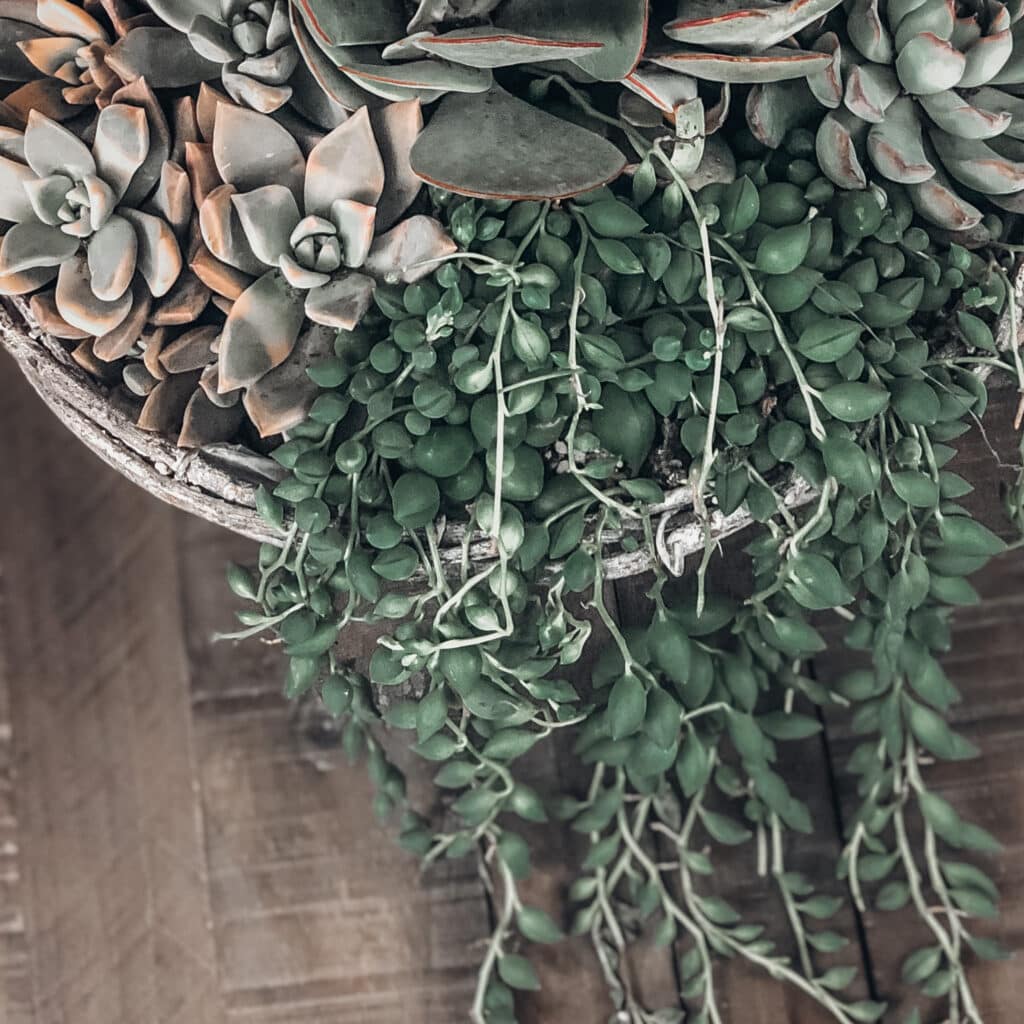
Consider the Climate
The first thing to consider when choosing your succulents is the climate in which you live.
Different succulent varieties have different temperature and humidity requirements, so aim to buy succulents suitable for the environment you plant to keep them in.
If you live in a hot, dry climate, choose succulents that are more drought-tolerant, such as cacti, jade crassula, elephant bush, or graptosedum.
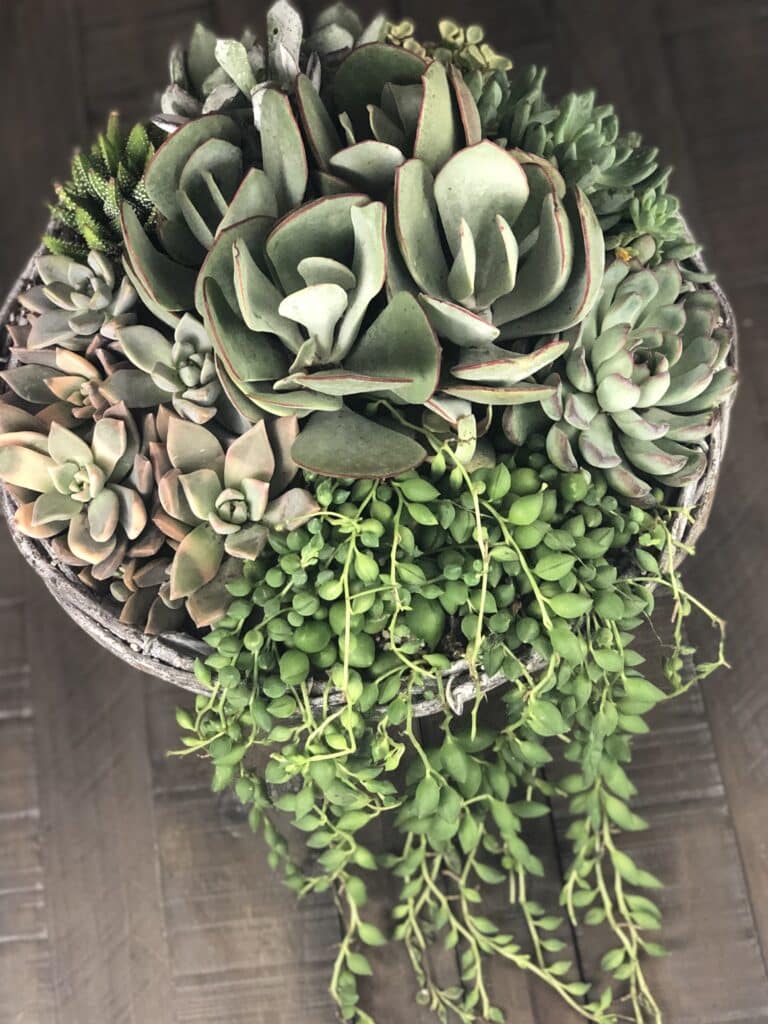
On the other hand, if you live in a cooler, more humid climate, you may want to choose succulents that prefer more moisture, such as echeveria.
Don’t stress about this part, though. I’ve grown tons of different varieties in my very dry climate, which experiences regular heat waves, and they have all done well as long as I keep on top of my watering schedule.
The only succulents I don’t keep outside in full sun are haworthia and string succulents like string of pearls because they don’t do well in hot sun. They’ll look their best in the shade where there is no threat of sunburn.
Once you’ve considered the climate, it’s time to choose your succulent varieties!
There are countless succulents in various colors, textures, and sizes.
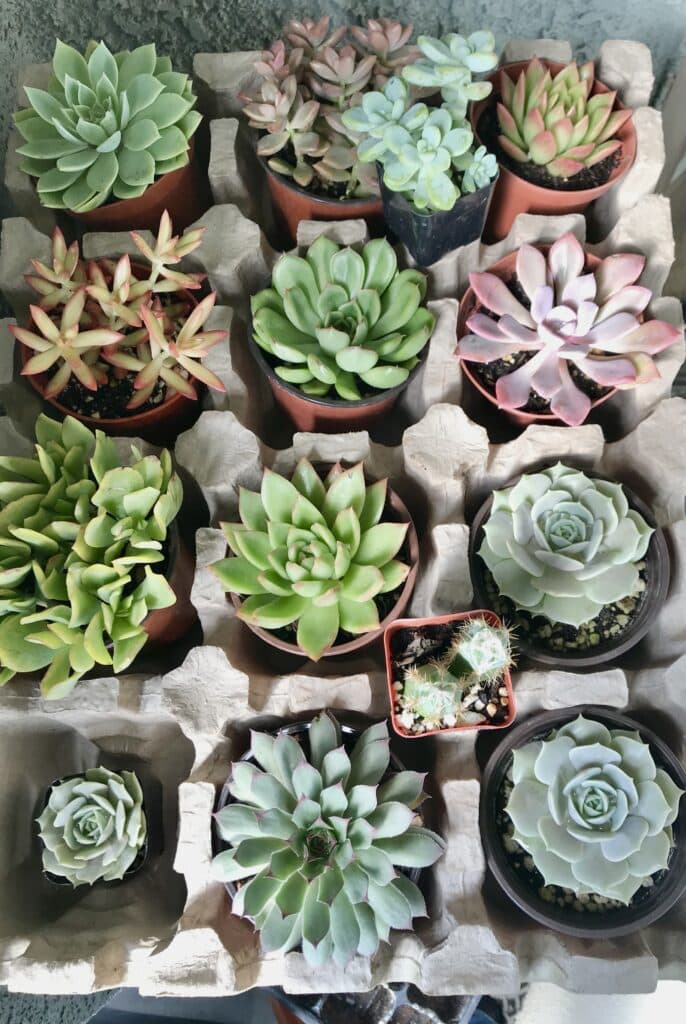
When selecting your succulents, consider the overall look you want to achieve.
Do you want a bowl of tiny, delicate succulents or a few larger, statement plants? Do you want a monochromatic color scheme or a mix of shades to create a colorful show?
Some popular succulent varieties for planting in bowls include:
- Echeveria: These rosette-shaped succulents come in various colors, from pale green to deep purple. They’re gorgeous and can hold their own against the prettiest flowers in the garden!
- Sedum: Low-growing succulents come in various shapes and sizes and are often used as groundcover. Plenty of them are rosette-shaped, too and thrive in full sun.
- Haworthia: Small, spiky succulents that a modern bohemian vibe to succulent bowls. Save these for your indoor arrangements as they do best in full shade.
- Aloe: These succulents have tall, pointed leaves. Many of my outdoor succulent planters include aloes that are on the smaller side. They have thrived here in our summer heat and they add tall focal points to my succulent bowls.
- Portulacaria afra (elephant bush): This succulent, especially the variegated kind, is a favorite of mine because it acts like a trailing succulent but is incredibly tough and heat-tolerant. Because of its uniqueness, it complements rosette succulents very well. Give it a try!
- String of Pearls: string succulents like string of bananas or string of teardrops are perfect for hanging baskets or succulent arrangements kept in the shade. Use it as your “spiller” and watch it add dimension to arrangements the longer it grows downwards.
Preparing the Bowl
Before you start planting your succulent bowl, you need to prepare the container. Here are a few things you should keep in mind:
Selecting the Right Bowl
When selecting a bowl for planting succulents, it’s important to choose one that is shallow and wide like the one shown below.
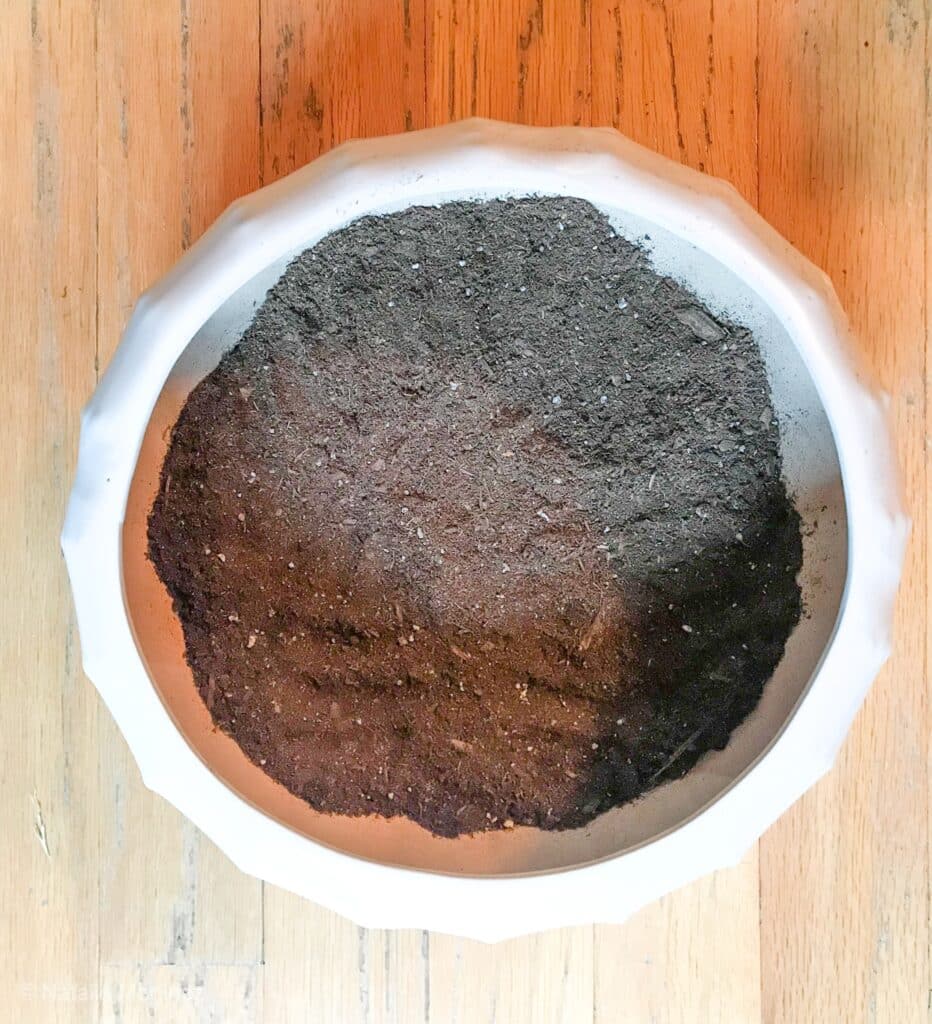
The pot can be terra cotta, ceramic, plastic, or a repurposed container.
Drainage and Soil Requirements
Succulents need well-draining soil and a container with good drainage to prevents root rot.
It’s always best to plant in a container with drainage. If it doesn’t have one, you can create your own by drilling holes in the bottom.
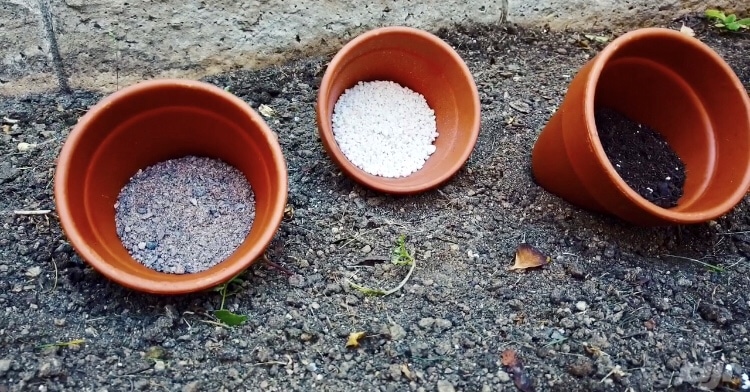
For soil, you can use a commercial cactus mix or make your own succulent soil. I like to mix sand, perlite, and regular potting soil.
Here’s my exact succulent soil recipe.
The goal is to plant in loose soil, not compact soil where the water has a tough time seeping out.
Planting Your Succulents
Once you have chosen your succulent bowl and plants, it’s time to start planting!
This section will cover the two most important aspects of growing your succulent bowl: arranging the plants and planting techniques.
Arranging the Plants
Before you start planting, arranging your succulents in the bowl is essential to ensure they fit well and look good together.
There are many ways to plant a succulent bowl but here is a common one. Use it as guidance, but just remember that there are other ways to arrange your plants.
This is one way to plant a succulent bowl:
- Start with the largest succulent and place it in the center of the bowl.
- Surround the center plant with smaller succulents
- Place trailing succulents around the edges of the bowl to add depth and texture.
- Mix different colors and textures to create a visually interesting arrangement, OR just stick to one type – the choice is yours! Have fun with it.
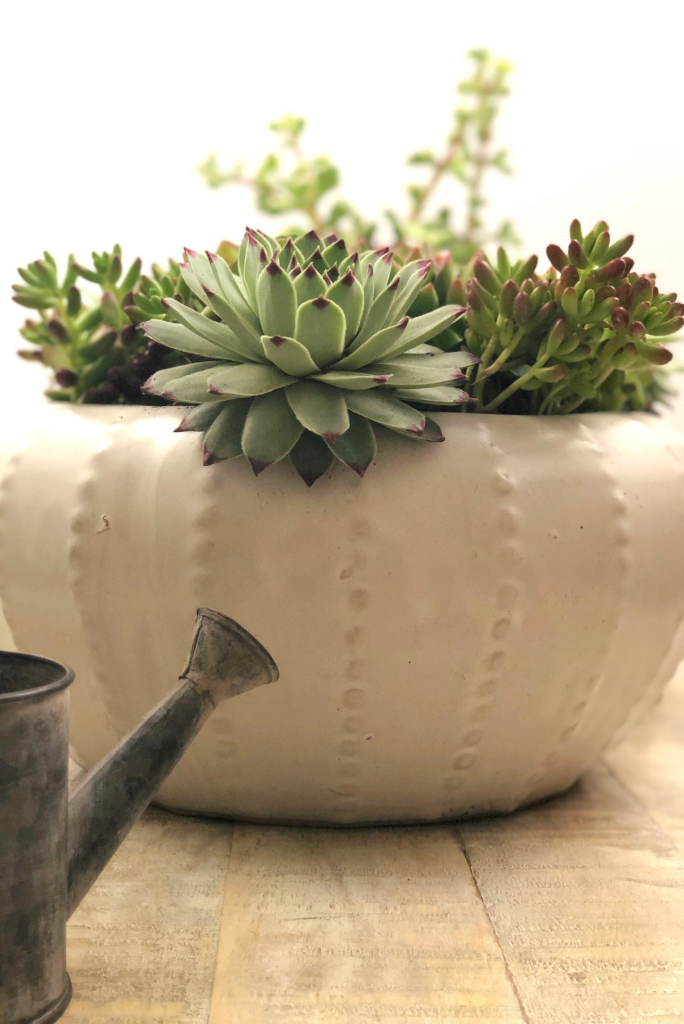
Planting Technique
Now that you have arranged your succulents, it’s time to start planting. Follow these steps for a successful planting:
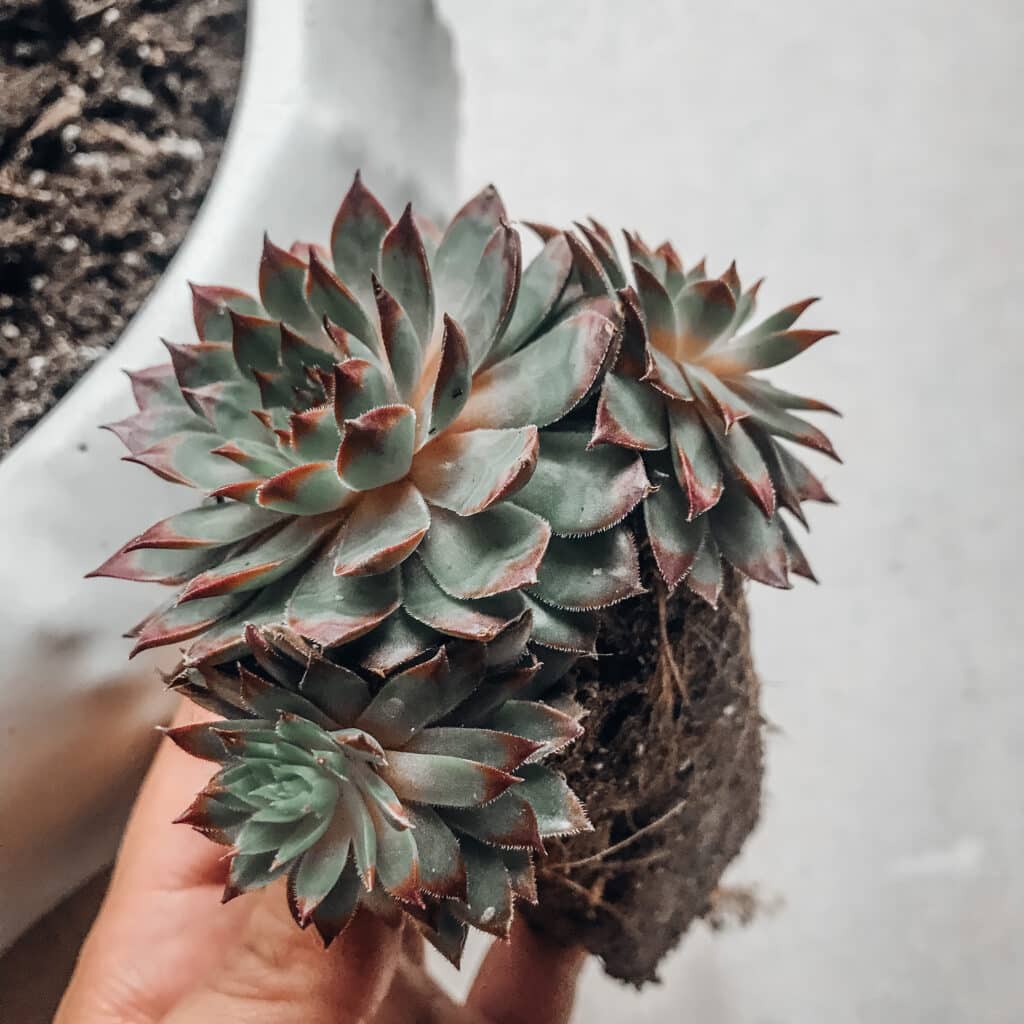
- Fill the bottom of the bowl with a layer of well-draining soil mix.
- Dig a small hole in the soil where you want to plant your succulent.
- Remove the succulent from its container and loosen the roots from the root ball just a tad. Don’t strip the roots of the soil because this will shock the plant.
- Place the succulent in the hole and cover the roots with soil, pressing down gently to secure the plant.
- Repeat the process for each succulent. You don’t have to leave room between them – I have found that succulents still thrive when planted closely together.
- Once all succulents are planted, you can give them a light watering the following day or two. Don’t water immediately after planting; this gives any damaged roots enough time to callus over before taking in water, which helps prevent root rot.

Remember to use gloves when handling succulents, as some varieties can be prickly or contain irritants!
Caring for Your Succulent Bowl
Watering Schedule
Succulents store water in their leaves and stems, which helps them tolerate drought and makes them so low-maintenance.
However, it’s important to avoid overwatering your succulent bowl.
Your watering frequency will depend on your area’s climate, humidity level, and whether they’re being kept indoors or outdoors.
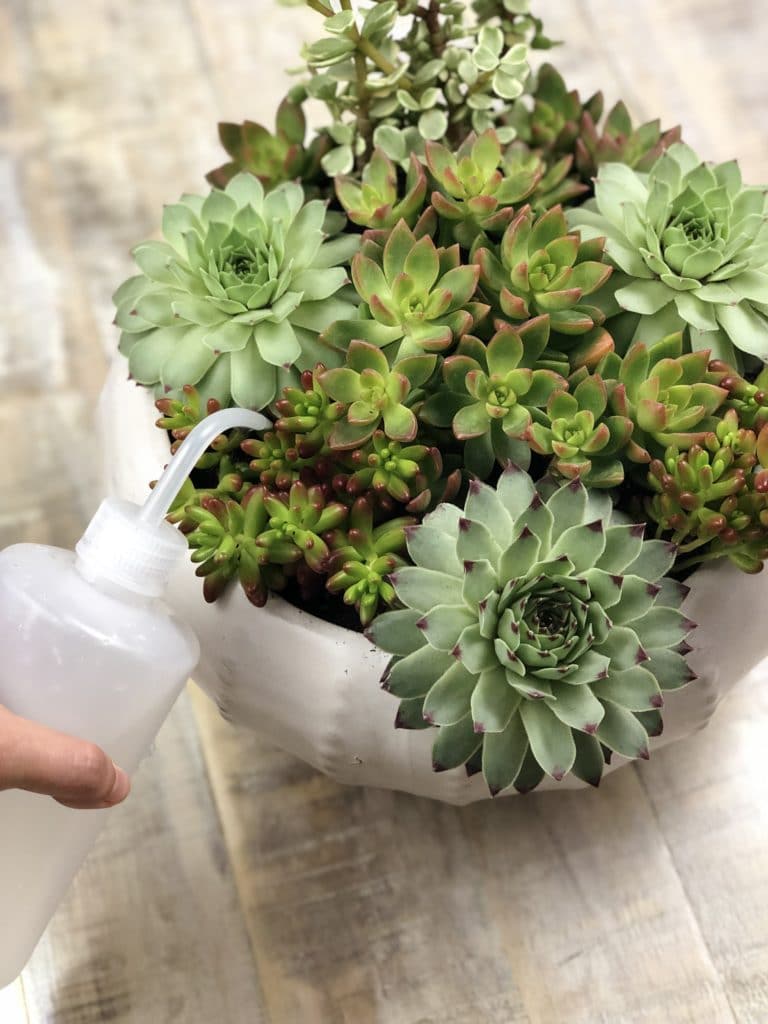
Generally, you’ll want to water your succulent bowl when the soil is completely dry if you keep it indoors.
If your bowl is outdoors, I prefer to water it when the top of the soil is dry.
Keeping the soil moist helps outdoor succulents maintain their beauty and fight off the harsh effects caused by high temperatures and direct sun.
Stick your finger into the soil to check for moisture at least once a week. If it feels dry, this means you should water soon!
Sunlight and Placement
Most succulents prefer bright sunlight.
Place your succulent bowl near a window that receives plenty of natural light.
Avoid placing it in direct sunlight during hot days or heatwaves because succulents can quickly sunburn, especially if they’re not accustomed to it.
If you notice that your succulents are stretching or leaning toward the light, it’s a sign that they need more light. Rosette succulents are the most susceptible to stretching. Find a sunnier spot to move it to, asap.
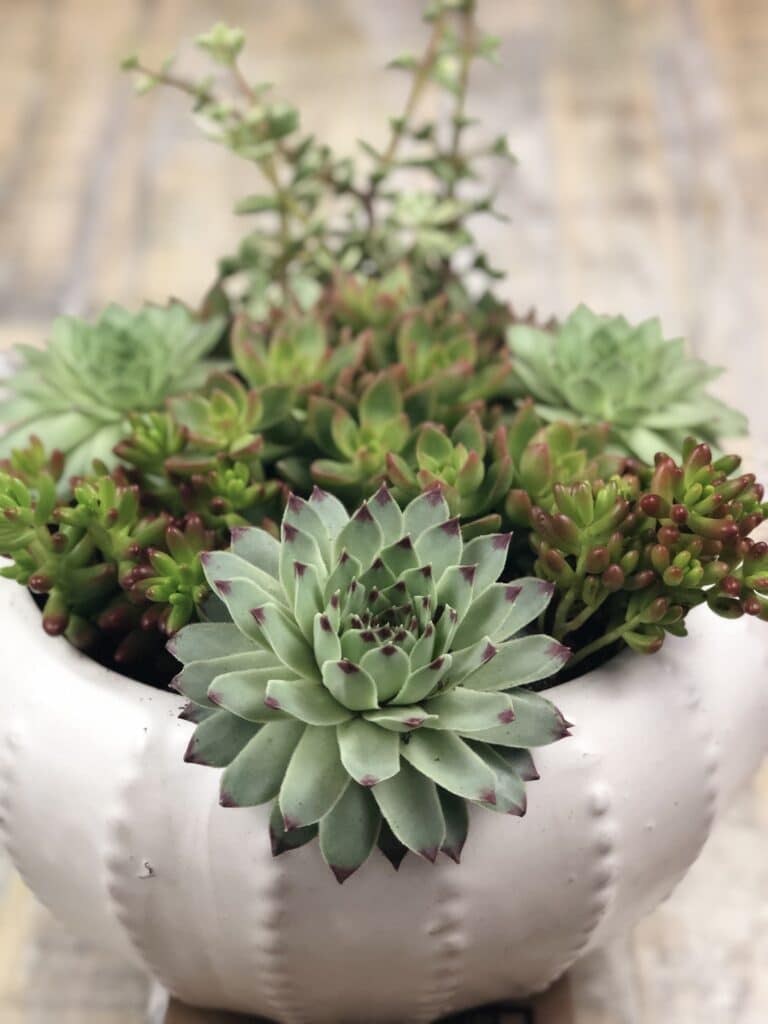
Fertilizing and Maintenance
You can skip fertilizing your succulent altogether because they don’t need it. However, a little fertilizer during their growing season helps them grow larger and faster. Just make sure you give it more sunlight because faster growth plus limited sunlight will end in leggy, stretched-out succulents.
Use a fertilizer made for succulents and follow the instructions, but never fertilize on dry soil – always water first, then apply fertilizer.
As for maintenance, this part is simple.
The only real maintenance you’ll have to do is prune away any brown or yellowing leaves. Simply tug these leaves off the stems and discard.
And if you notice any white cotton-like mounds on your leaves, you might be dealing with pesky mealybugs. This post on How to Get Rid of Mealybugs has helpful photos and tips for dealing with the problem.
I hope you enjoy creating your first succulent bowl and I hope it inspires you to keep creating with these beautiful plants. Good luck!
WANT TO LEARN MORE ABOUT SUCCULENTS?
I’ve got you covered with more succulent care posts and craft posts, too!
Best Full Sun Succulents for a Beautiful Outdoor Garden
How to Water Succulents in Pots Without Drainage
The Best Succulent Plants for Indoors
DIY Succulent Arrangements: Fun and Easy Ideas for Your Home
Why are My Succulent Leaves Shriveling?
Do Succulents Die After Flowering?
How to Make a Fairy Garden Using Succulents
How to Water Succulents
How to Care for a Jade Plant
How to Fertilize Succulents
How to Get Rid of Mealybugs on Succulents
What’s Wrong with My Succulent?